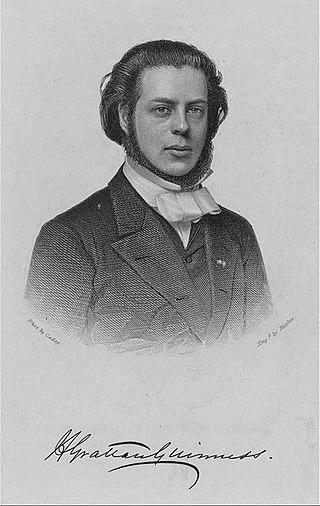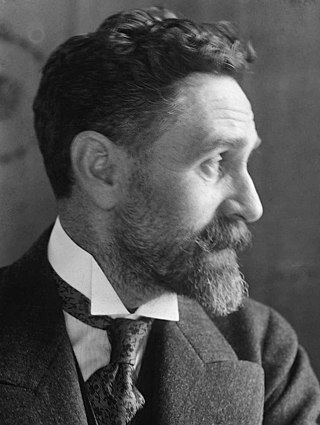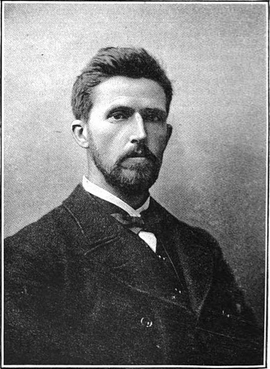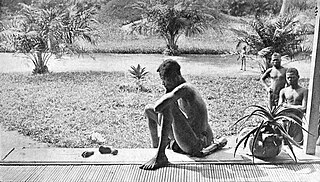Canadian Baptist Ministries (CBM) or Ministères Baptistes Canadiens is an association of Baptist Christian churches in Canada. It is a member of the Baptist World Alliance. The headquarter is in Mississauga, Ontario.

The Cambridge Seven were six students from Cambridge University and one from the Royal Military Academy, who in 1885, decided to become missionaries to China through the China Inland Mission. The seven were:

Mary Geraldine Guinness, often known as Mrs. Howard Taylor, was a British Protestant Christian missionary to China, and author of many missionary biographies on the history of the China Inland Mission (CIM).

Henry Grattan Guinness was an Irish Nonconformist Protestant preacher, evangelist and author. He was the great evangelist of the Third Evangelical awakening and preached during the Ulster Revival of 1859 which drew thousands to hear him. He was responsible for training and sending hundreds of "faith missionaries" all over the world.

The Guinness family is an extensive Anglo-Irish family known for its achievements in brewing, banking, politics, and religious ministry. The brewing branch is particularly well known among the general public for producing the dry stout beer Guinness, as founded by Arthur Guinness in 1759. Beginning in the 18th century, they became a prominent part of what is known in Ireland as the Protestant Ascendancy; in the late 19th century they were elevated into the British nobility.

Frederick Howard Taylor a.k.a. F. Howard Taylor, was a British pioneer Protestant Christian missionary to China, author, speaker and second son of James Hudson Taylor, founder of the China Inland Mission, and Maria Jane Dyer.

The Casement Report was a 1904 document written at the behest of the British Government by Roger Casement (1864–1916)—a British diplomat and future Irish independence fighter—detailing abuses in the Congo Free State which was under the private ownership of King Leopold II of Belgium. This report was instrumental in Leopold finally relinquishing his private holdings in Africa. Leopold had held ownership of the Congolese state since 1885, granted to him by the Berlin Conference, in which he exploited its natural resources for his own private wealth.

Frederick William Baller was a British Protestant Christian missionary to China, Chinese linguist, translator, educator and sinologist.

John McKendree Springer was an American bishop of the Methodist Episcopal Church and The Methodist Church, elected in 1936. He was also a pioneering missionary instrumental in developing Methodism on the continent of Africa. While in Africa he introduced schools which came to be welcomed by many of the tribal chiefs and which the young Africans came to grow very fond of. Springer is noted for exploring and journeying 1500 miles across central Africa on foot in 1907, along with his wife Helen.
The Regions Beyond Missionary Union was a Protestant Christian missionary society founded by Henry Grattan Guinness, D.D. and his wife Fanny in 1873.

The Abir Congo Company was a company that exploited natural rubber in the Congo Free State, the private property of King Leopold II of Belgium. The company was founded with British and Belgian capital and was based in Belgium. By 1898 there were no longer any British shareholders and the Anglo-Belgian India Rubber Company changed its name to the Abir Congo Company and changed its residence for tax purposes to the Free State. The company was granted a large concession in the north of the country and the rights to tax the inhabitants. This tax was taken in the form of rubber obtained from a relatively rare rubber vine. The collection system revolved around a series of trade posts along the two main rivers in the concession. Each post was commanded by a European agent and manned with armed sentries to enforce taxation and punish any rebels.

Frederick Stanley Arnot was a British missionary who did much to establish Christian missions in what are now Angola, Zambia and the Democratic Republic of the Congo (DRC).
The Livingstone Inland Mission (LIM) was an evangelical missionary society that operated in what is now the Democratic Republic of the Congo between 1878 and 1884.
Gershom Whitfield Guinness was a Protestant missionary in China, where he also was a practising medical doctor and a writer.

Alice, Lady Harris was an English missionary and an early documentary photographer. Her photography helped to expose the human rights abuses in the Congo Free State under the regime of King Leopold II of the Belgians.

Daniel Jacob Danielsen, nicknamed Dollin, was a Faroese Open Brethren missionary, marine engineer, and humanitarian. While working for the Congo-Balolo Mission between 1901 and 1903, he was noted for his work with Roger Casement during the writing of the report that exposed atrocities committed in the Congo Free State: beyond acting as his engineer and interpreter, he took many of the most prominent photographs that brought the atrocities to public attention.

Clinton Caldwell Boone was an African-American Baptist minister, physician, dentist, and medical missionary who served in the Congo Free State and Liberia. The son of Rev. Lemuel Washington Boone and Charlotte (Chavis) Boone of Hertford County, North Carolina, he played an important role in Africa as a missionary for the Lott Carey Foreign Mission Convention and the American Baptist Missionary Union, now American Baptist International Ministries.

Fanny Grattan Guinness born Fanny Emma Fitzgerald writing as Mrs. H. Grattan Guinness was a British writer, evangelist and trainer of missionaries.
The history of Baptist Christianity in Sichuan began in 1890 when missionaries began arriving from the United States. Baptist missionaries in Sichuan were organized under the American Baptist Missionary Union, later renamed American Baptist Foreign Mission Society. Missionary activity in China generated controversy among many native Chinese and faced armed opposition during both the Boxer Rebellion and the later Communist movement in China. Although the former did not affect Sichuan so much as some other parts of China, the province was one of the hotbeds of anti-missionary riots throughout its ecclesiastical history.

Nsala of Wala in the Nsongo District (Abir Concession) is a photograph published by Edmund Dene Morel in his book King Leopold's Rule in Africa, in 1904. The image depicts a Congolese man named Nsala examining the severed foot and hand of his five-year-old daughter, Boali. The photograph was taken by Alice Seeley Harris, the wife of a missionary, in the village of Baringa on 14 May 1904. It was subsequently employed as a tool in the media campaign against the inhumane situation in the Congo Free State, which was largely characterised by rubber exploitation.


















